#lunar goddess diana
Text


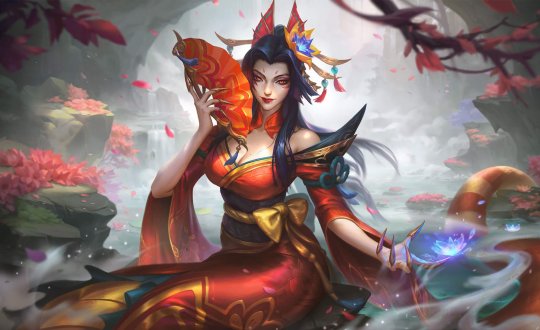

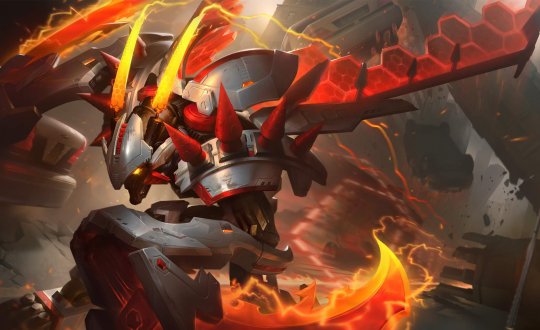

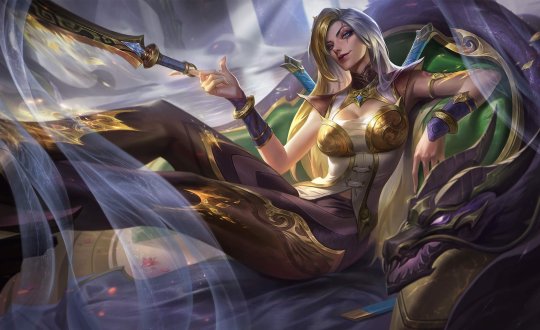

Chroma Splash Arts from LoL CN:
Star Guardian Xayah & Kai'Sa - Ruby chromas
Spirit Blossom Cassiopeia & Riven - Ruby chromas
Mecha Kha'Zix - Pearl chroma
Lunar Goddess Diana - Turquoise chroma
Warring Kingdoms Katarina - Golden chroma
Popstar Ahri - Catseye chroma
#xayah#kai'sa#cassiopeia#riven#kha'zix#diana#katarina#ahri#star guardian xayah#star guardian kai'sa#spirit blossom cassiopeia#spirit blossom riven#mecha kha'zix#lunar goddess diana#warring kingdoms katarina#popstar ahri#league of legends#league of legends skins#league of legends splash art#splash art#skins#chroma skins#official
208 notes
·
View notes
Text
Diana: The Moon Goddess
Important in many aspects of Wicca, Diana is typically recognized widely throughout the community as the Moon Goddess.

Origins:
Seeming to originate in Roman mythos, Diana is Goddess of wild animals and the hunt (identified with the Greek goddess Artemis). In the beginnings of her story, Diana likely had no connection with the moon. However, it is popularly theorized that she later became associated through her connection to Artemis’s identification with both Selene (Luna) and Hecate. My personal theory on this matter is that Diana became affiliated with the moon through her status as a goddess of fertility and protector of women during labor, as the menstrual cycle is commonly seen to be similar to the cycle of the moon.
In her cult, Diana was also considered the protector of the lower classes, especially slaves. As I will mention later in the post, the 13th of August, her festival at Rome, was a holiday for slaves. A unique custom within those believing in Diana dictated that priests be a runaway slave and that they fell their predecessor in combat.
The most widely known place of worship for the Goddess was the grove of Diana Nemorensis (“Diana of the Wood”) on the shores of Lake Nemi at Aricia (modern Ariccia) near Rome. Associated with Diana were Egeria, the spirit of a nearby stream who shared with Diana the guardianship of childbirth, and the hero Virbius (the Roman counterpart of Hippolytus) who was said to have been the first priest of Diana’s cult at Aricia. As a recognized fertility deity, Diana was invoked by women to aid in conception and delivery. In found Roman art, Diana typically appears as a huntress with a bow and quiver. She was also usually seen accompanied by a hound or deer.

Triple Goddess Belief:
Seen with Luna and Hecate, it is believed that Diana is the Triple Goddess by some Wiccans. Some believe that instead of being part of a trifecta, the three statuses of the Triple Goddess are all Diana (representing the huntress, moon, and underworld).
How To Honor:
Diana is a goddess of nature, so honoring nature is honoring her. She is also, of course, the goddess of the moon. In this sense, honoring the moon and incorporating moon magic into your practice is also seen as a valid way of worshipping Diana.
Some today also continue the tradition of celebrating Nemoralia. Also known as the Festival of Torches, this is a three day festival originally celebrated by the ancient Romans on the Ides of August (August 13–15) in honor of the goddess Diana. Though it was originally celebrated at the Sanctuary of Diana at Lake Nemi, it soon became more widely celebrated. It is interesting to note that the Catholic Church may have adapted the Nemoralia as the Feast of the Assumption.
#lunar magic#moon magic#wicca#witch#witchy#diana#moon#roman goddess#roman mythology#mythology#mythos#myths#culture#religion#history
26 notes
·
View notes
Text
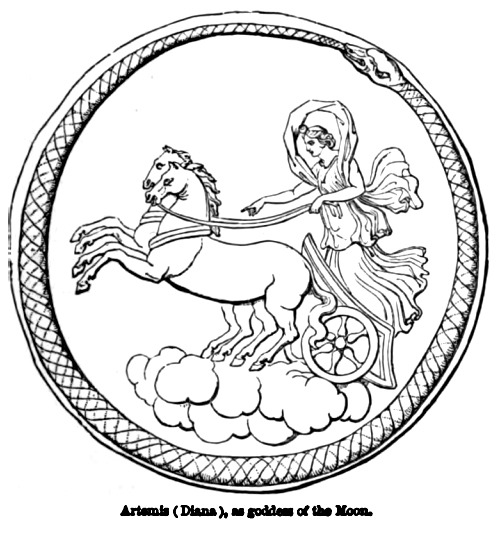
Artemis (Diana), as goddess of the Moon. From A Smaller Classical Mythology: With Translations from the Ancient Poets, and Questions Upon the Work by William Smith. Public domain.
#artemis#diana#artemis art#diana art#deity art#spirit art#moon goddess#greek goddess#roman goddess#greek gods#roman gods#greek deities#roman deities#goddess#lunar deities
116 notes
·
View notes
Text
Everything You Need to Know About Crystals: Moonstone (White)
Moonstone (The Sacred Stone of the Moon)
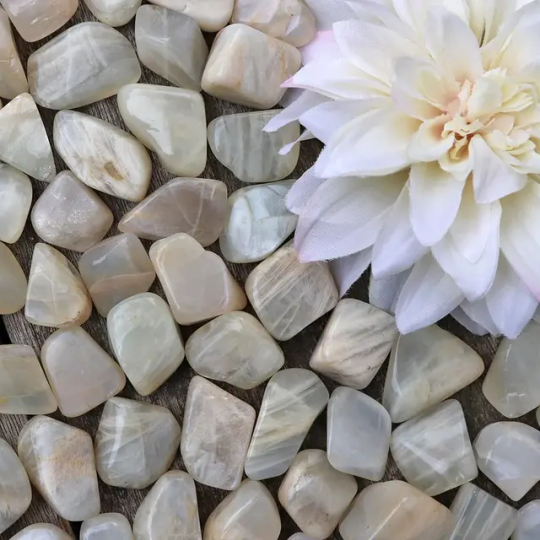
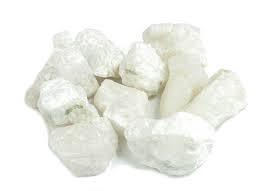

Color: White, cream, yellow, blue, green
Rarity: Easy to obtain
Hardiness: 6.5
Type: Oligoclase/ Feldspar
Chakra Association: Brow, Heart, Root, Third Eye, Sacral, Solar Plexus
Deities: All Lunar Deities, Diana, Selene, Artemis, Isis, Chandra
Birthstone: June
Astrological Signs: Cancer
Element: Water
Planet: Moon
Origin: Australia, India, Myanmar, Sri Lanka, USA
Powers: Femininity, Calmness, Balance, Luck, Intuition, Healing, Sensual, Patience, Reproductive Health
Crystals It Works Well With: Aquamarine, garnet, pearl
How It is Created: Moonstone is a type of feldspar composed of potassium aluminum silicate. It can be found in a number of colors, but all examples demonstrate a particular sheen known as labradorescence; an effect also found in labradorite and blue moonstone. Labradorescence is a light effect caused by parallel hairlike structures laid down within the crystal matrix, which reflect light back and forth, creating different-colored effects, including blue, yellow, silvery gray, and white.
History: Moonstone is the sacred stone of India. During the earliest traditions, the gem was said to have been embedded in the forehead of Ganesh, the four-handed god of the moon, since the beginning of time. It was written in Hindu mythology that moonstone is made from moonbeams, thus its luster.
The magnificent gem is never displayed outside for sale unless placed on a yellow cloth, as yellow is a sacred color. According to other legends, Moonstone can give gifts of prophecy and clairvoyance to the wearer. It could also clear the mind for the wearer to welcome wisdom. But to unlock this ability, Moonstone must be placed in their mouths during the full moon. Since ancient Egypt it is considered as a spiritual stone as it is seen as the gem of protection for night travelers.
Since Moonstone looks a lot like the moonshine, ancient Romans believed that it was formed from moonlight. If you look at the gem closely, you’ll see a dance of light that lurks on the insides of the gem. Ancient Greeks merged the names of the goddess of love (Aphrodite) and the goddess of the moon (Selene) and christened Moonstone as “Aphroselene”. While the Romans believed that the gem exhibits the image of their moon goddess, Diana.
It is also known as an aphrodisiac and when worn by two people, they will fall passionately in love when the moon is high. Moonstone was once called the “Travelers Stone” as it is said to protect those who travel at night, especially at sea.
What It Can Do:
When worn, can attract true love and arouse passion
If you give your lover a moonstone during the full moon, there will be passion between you always
Can settle disagreements and return things to peaceful status
Sewn into garments can enhance fertility
Wearing moonstone protects sensitive emotions
Enhances divination, prophetic dreams and prevents nightmares
Great for meditation and scrying
Represents yin and attracts peaceful energy
Protects travelers at night and by sea
Considered good luck
Balances male-female energies and aids men who want to get in touch with their feminine side
Affects the female reproductive cycle and alleviates menstrual-related diseases and tensions
Helps with digestive and reproductive systems, assimilates nutrients, eliminates toxins and fluid retention, and alleviates degenerative conditions of the skin, hair, eyes and fleshy organs such as the liver and pancreas.
How to Get the Best Out Of: Wear as a ring or place on the appropriate body part, would recommend the forehead, for spiritual experiences, and solar plexus or heart for emotions. Women may need to remove Moonstone at full moon.
How to Cleanse and Charge: Moonstone is relatively soft stone, 6 on the Mohs scale, so it should be handled with care as it can be easily scratched or crushed. Moonstone should be stored separate from other jewelry in its own soft bag or lined box and should not be worn while performing strenuous tasks that could result in it getting bumped or scratched. It can be cleaned with plain water and a soft cloth. If it gets scratched, take it to a jeweler to have it polished out.
Charge your moonstone in the light of the waxing moon and keep it out of direct sunlight.
Crystal Grid: N/A Couldn't find one that wasn't too complex @_@
Sources
#moonstone#witchblr#witch community#witchcraft#occulltism#paganblr#gemstone#crystal witch#crystals#witchcraft 101#witchcraft resources#geology#lunar#lunar witch#nature#geology rocks#rocks#samhain
296 notes
·
View notes
Text
Hellenic Gods Fact Sheets and Hymns: Hecate
Other Names: Trivia, Brimo
Epithets: Anassa eneroi (queen of those below), Aidonaia (lady of the Underworld), Amibousa (she who changes), Atalus (tender, delicate), Borborophorba (she who feeds on filth), Brimo (angry, terrifying), Despoina (mistress), Eileithyia (of childbirth), Enodia (of the roads), Epaine (dread), Euplokamos (bright-tressed), Khthonia (of the Underworld), Kleidouchos (keeper of the keys), Kourotrophos (protector of children), Krokopelos (saffron-robed), Liparokredemnos (bright-coiffed), Nycteria (nocturnal; of the night), Nyctipolos (night-wandering), Perseis (destroyer/ daughter of Perses), Phosphoros (light bearer), Propolos (guide), Propylaia (the one before the gate), Scylacagetis (leader of dogs), Soteira (savior), Trikephalos (three-headed/of the crossroads), Trimorphos (three-formed), Trioditis (of the three ways), Trivia (of the three ways).
Domains: Witchcraft, magic, necromancy, ghosts, nightmares, death, initiation, the crossroads, gateways, passage between worlds, and the night.
Appearance: [My UPG] A tall (over 6’) woman, neither young nor old, with waist-length black hair, pale skin, prominent cheekbones, a heavy jaw, and intense green eyes. She is usually dressed in black folds molded into a simple dress or robes. She has a severe expression and an intimidating presence. She speaks with a low voice.
Sacred Days and Festivals: Eleusinia (22 Metageitnion). Nemoralia (August 13th-15th). Deipnon, last day of each (lunar) month.
Symbols/Attributes: Torches, keys, daggers, strophalos (iynx wheel)
Sacred Animals: Dog, polecat, serpent, horse, frog.
Sacred Plants: Yew, cypress, garlic, willow, hazel, black poplar, aconite, belladonna, dittany, mandrake, hemlock, asphodel
Elemental Affinity: Darkness, light, fire
Planet: Moon
Colors: Black, saffron, silver.
Crystals: Black onyx, hematite, obsidian, black tourmaline, moonstone, smoky quartz, agate, amethyst.
Incense: Myrrh, almond, cypress, camphor, saffron, mugwort, pomegranate.
Tarot Cards: The High Priestess, The Moon, Death
Retinue: Empousai, ghosts of the dead, dogs, Lampades (torch-bearing underworld nymphs)
Associated People: Witches (and other magic-users), the dead
Offerings: Bread, eggs, honey, garlic, menstrual blood, graveyard dirt.
Syncretized With: Artemis, Diana, Persephone, Eileithyia, Selene, Nephthys, Ereshkigal, Nicnevin, Heqet
Hymns to Hecate
Orphic Hymn to Hecate
Hekate Enodia, Trivia, lovely dame,
Of earthly, watery, and celestial frame,
Sepulchral, in a saffron veil arrayed,
Pleased with dark ghosts that wander through the shade;
Daughter of Perses, solitary goddess, hail!
The world’s key-bearer, never doomed to fail;
In stags rejoicing, huntress, nightly seen,
And drawn by bulls, unconquerable, monstrous queen;
Leader, Nymphe, nurse, on mountains wandering,
Hear the suppliants who with holy rites thy power revere,
And to the herdsman with a favoring mind draw near.
Hecate’s Hymn to Herself
I come, a virgin of varied forms,
wandering through the heavens, bull-faced,
three-headed, ruthless, with golden arrows;
chaste Phoebe bringing light to mortals, Eileithyia;
bearing the three synthemata [sacred signs] of a triple nature.
In the Aether I appear in fiery forms
and in the air I sit in a silver chariot,
Earth reins in my black brood of puppies.
(From Porphyry’s lost commentary on the Chaldean Oracles, preserved by Eusebius of Caesaria in Praeparatio Evangelica. According to Porphyry, this hymn was composed by Hecate herself.)
Magical Invocation to Hecate
Approach, you of the netherworld, of earth, of heaven, Bombo!
You by the wayside, at the crossroads, light-bearer, night-wanderer,
Enemy of light, friend and companion of night,
Rejoicing in the howl of dogs and in crimson gore,
Lurking among the corpses and the tombs of lifeless dust,
Lusting for blood, bringing terror to mortals,
Grim one, Ogress [Mormo], Moon – you of many forms,
May you come gracious to our sacrificial rites!
(Preserved in Refutation to All Heresies by Hippolytus)
Invocation to Hecate from PGM IV 2708-84
Come, giant Hecate, Dione’s guard,
O Persia [daughter of Perses], Baubo Phroune, dart-shooter,
Unconquered Lydian, the one untamed,
Sired nobly, torch-bearing, guide, who bends down
Proud necks, Kore, hear, you who’ve parted / gates
Of steel unbreakable. O Artemis,
Who, too, were once protectress, mighty one,
Mistress, who burst forth from the earth, dog-leader,
All-tamer, crossroad goddess, triple-headed,
Bringer of light, august / virgin, I call you
Fawn-slayer, crafty, O infernal one,
And many-formed. Come, Hekate, goddess
Of three ways, who with your fire-breathing phantoms
Have been allotted dreaded roads and harsh /
Enchantments, Hekate I call you
[…]
O Hekate of many names,
O Virgin, Kore, Goddess, come, I ask,
O guard and shelter of the threshing floor
Persephone, O triple-headed goddess,
Who walk on fire, cow-eyed BOUORPHORBE
PANPHORBA PHORBARA AKITOPHI
ERESHKIGAL / NEBOUTOSOUALETH
Beside the doors, PYPYLEDEDEZO
And gate-breaker; Come Hekate, of firey
Counsel, I call you to my sacred chants.
#hecate#hekate#greek gods#greek goddess#hellenic paganism#hellenic polytheism#helpol#witchcraft#witchblr#hecate worship#fact sheets#orphic hymns#greek magical papyri
297 notes
·
View notes
Text
Hekate Correspondences According to Hekate Liminal Rites by Sorite d'Este
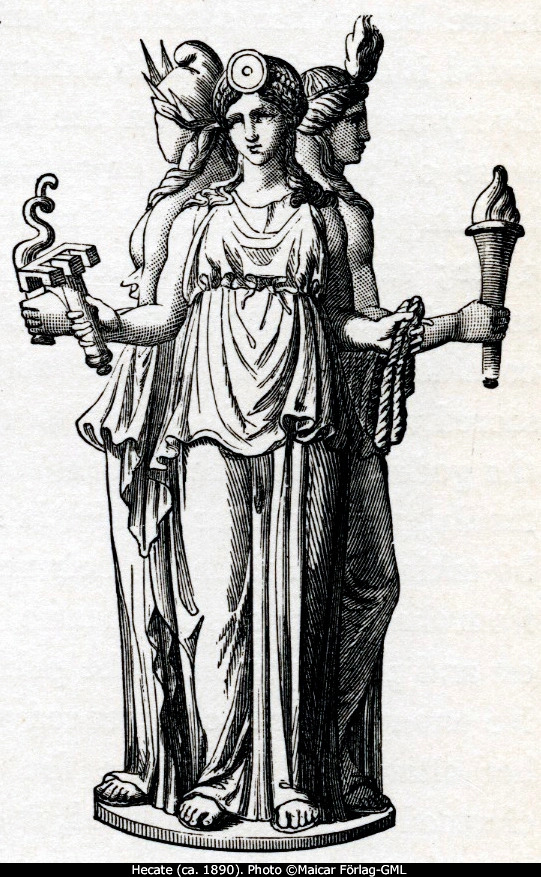
Goddess of: Crossroads, thresholds, boundaries, transitions, dreams and nightmares, oracles and divination, life and death, the restless dead, witchcraft and herbalism/poisons, protection, childbirth, the heavens, sea and earth.
Epithets: Chthonia (earthly one), Dadouchos (torch-bearer), Enodia ('of the wayside' or 'of the crossroad'), Kleidouchos (key-bearer), Kourotrophos (child's nurse), Phosphorus (light-bearer), Propolos (companion), Propylaia (the one before the gate), Soteira (savior), Triformis (three bodied), Trioditis (of the three ways), Brimo (angry/terrifying), Nexichthon (she who breaks open the earth), Prytania (invincible queen).
Symbols: Keys, torches, the moon, lunar crescent diadem, bronze/brass (her sacred metal), iron (particularly nails), bronze or golden sandals, virgin, garland/wreath, scorge, whips, sickles, swords, knives, wands, things done in threes, the strophalos, white, black, red, and saffron yellow.
Animal Associations: Lions, (black) dogs, horses, cows/bulls, hydras, snakes, bats, and dragons.
Plant Associations: Rue, laurel, cumin, sesame seeds, cornels, asphodel, maidenhair, rushes, galangal, verbena, sage, hedge-mustard, purple honeysuckle, cassidony, field basil. mandrake, hulwort, dittany, saffron, nose-smart, lion-foot, greenbriar, camomile, black poppy, alcua, all-heal, white hellebore, aconite, oak, ebony, garlic, and cypress.
Deities She's Worshiped With: Demeter and Kore (Eleusinian mysteries), Poseidon, and Hermes.
Deities She Absorbed: Brimo, Despoina, Enodia, Genetyllis, Kotys, Kratais, and Kourotrophos.
Deities She's Syncretised With: Artemis, Selene, Mene, Persephone, Physis, Bendis, Bona Dea, Diana, Ereschigal, and Isis.
Offerings: Dogs, goats, lizards (this can be something in their shape), incense and fragrances, resins like frankincense, myrrh, and storax, wafers and cakes, barley cakes, honey, vegetables, first fruits, flowers, fish like sprat and mullet, wine, milk, blood, oil, water, raw eggs, bread, cheese, and cheesecakes.
Types of Magic Historically Attributed to Her: Rejuvenation of the old, control over weather, necromancy/raising the dead, purification, love/binding/relationship destroying magic, invisibility/to move unseen, shapeshifting, control over animals, herbal/poison magic, and divination.
#hekate#hecate#hellenic#hellenic polytheism#pagan#paganism#paganblr#helpol#hellenism#hellenismos#theoi#correspondences#polytheism#polytheistic#hellenic gods#hellenic religion#riley cackles
737 notes
·
View notes
Text

Navigation: Masterlist✦Ask Rules✦PSD✦INSPO
Askbox✦Template✦Paid Readings
Advanced intuition: Cancerians possess a naturally developed intuition, often bordering on mind-reading abilities. They have a knack for picking up on unspoken cues and can be highly perceptive. Their cardinal nature makes them naturally suspicious of others if they sense any hint of deception or betrayal.
High expectations in relationships: When it comes to romantic partnerships, Cancerians have high standards and specific desires. They may have a long list of qualities and expectations for their ideal partner, making it challenging for someone to win their heart.
Compassionate and charitable: They are renowned for their big hearts and their inclination towards acts of kindness and charity. While they may be cautious about giving their heart to just anyone, they readily offer love and support to those in need.
Artistic souls: They possess expressive souls and often find their creative outlet in various art forms. They may excel in painting, architecture, sewing, storytelling, or any other artistic pursuit. Their imaginative nature can be particularly evident in activities like being a Dungeon Master in a role-playing game.
Emotional vulnerability: They tend to pay a high emotional price for situations that may not be worth the pain. They are sensitive individuals and can find themselves deeply hurt and betrayed, often hitting rock bottom when faced with emotional turmoil.
Generosity from the heart: They have a generous nature and are willing to give gifts with sincerity. When they are empathetic and know the recipient well, they choose gifts that align with the person's desires. Even when they don't know someone intimately, they give something they hold dear, reflecting their own affections.
Keepers of secrets: They tend to hide their emotions as a defense mechanism. They may not readily share their traumas or difficult life experiences, preferring to keep those matters private until they feel ready to address them.
Appreciation for leisure: They have a strong affinity for lazy, relaxed moments. They value their leisure time and cherish days when they can unwind and do nothing. Once they enter this state of relaxation, they are reluctant to leave it for anything.
Complex emotional landscape: They may not easily delve into their feelings, which can cause them to either explode emotionally or withdraw rapidly from a topic. This tendency to avoid emotional intensity is especially pronounced if the subject matter aligns with their vulnerabilities.
Lunar influence: They are strongly influenced by the phases of the Moon. Diana, the Moon goddess, reigns over their lives. During the waning and new moon phases, their loving nature may not be as prominent as it is during other times.
Affectionate beings: They thrive on physical touch and affection. They enjoy cuddling, hugs, and intimate gestures. They may even have a knack for inventing endearing displays of affection, such as the Eskimo kiss.
Nostalgia enthusiasts: They embrace the bittersweet feeling of "saudade," a combination of longing and nostalgia. They find comfort in reminiscing about the past, holding onto memories that evoke a sense of warmth and happiness.
Strong bonds with family and friends: Ruling over the fourth house, Cancer highly value the presence and support of their family. They consider their close friends as honorary family members. In relationships, they seek harmony between their partner and their family, longing for a sense of acceptance and inclusion.
Seek emotional connection: For Cancerians, intimacy goes beyond physical desire. They need a deep emotional connection and a sense of comfort and security with their partner before they feel ready for sexual intimacy. They require time to establish trust and establish a strong emotional bond.
Craving comfort: They have a deep need for a cozy and comfortable home environment. They desire a space that is both practical and inviting, where they can welcome their family members and create a sense of warmth and sanctuary.
Love for meaningful conversations: They enjoy engaging in meaningful discussions with others, particularly in the company of friends. Once they start a conversation, they are eager to delve deeper into the subject matter and can either enjoy lighthearted banter or engage in more profound debates.
Honest and straightforward: They value honesty and transparency in their actions and opinions. They strive to make their intentions clear and fulfill their commitments. They also have a strong sense of reciprocity and remember when they owe someone a favor or kindness.
Multifaceted individuals: Just like the phases of the moon, Cancerians can exhibit various personas and characteristics. They may have expansive phases akin to the full moon, nurturing phases like the crescent moon, or even melancholic traits. Around their Saturn's return (between the ages of 28 and 30), they can undergo significant personal transformations, similar to the changing phases of the moon.
Possibility of enemies: Over time, Cancerians may encounter and even create enemies. Those with strong egos and a desire for expansion may clash with Cancerians, as they don't find such qualities in themselves. When in contact with enemies, Cancerians may experience negative emotions and low vibrations.
(CC) AstroJulia Some Rights Reserved

#astrojulia#astrology#witchblr#astroblr#all about astrology#astro community#astro observations#astrology notes#witch community#astrology basics#cancer#cancer sun#cancer rising#cancer moon#cancer stellium
164 notes
·
View notes
Text
Selene
Selene is a Greek goddess of the moon, Selene is a winged, silvery woman who presides over night skies, sailing along in her chariot pulled by shining, winged white horses, cows or bulls (whose horns represent the crescent moon). Sometimes she sits astride a bull, horse or mule.
─── ・ 。゚☆: *.☽ .* :☆゚. ───
In contemporary Witchcraft, Selene is one aspect of the Triple Goddess, along with Diana (Artemis) and Hecate. Selene’s role in Greek mythology is minor. She is the daughter of Theia and Hyperion. In some myths she is the daughter of Theia and Helios, the sun god, and is the sister of Phoebus Apollo, who succeeded Helios as the sun deity. Other names for Selene are Phoebe and mene, the latter of which refers to her changing shape during the course of the lunar month.
─── ・ 。゚☆: *.☽ .* :☆゚. ───
The Greeks worshiped Selene at new and full moons, believing her to influence the fecundity of all life forms on earth. During the Hellenistic era, Selene (the moon) was the destination of the souls of the dead. The most significant myth of Selene is that of her fascination with her lover, Endymion, a magnificent youth who is a king, hunter or shepherd.
─── ・ 。゚☆: *.☽ .* :☆゚. ───
In the version recorded by Theocritus, a 3rd-century poet, Endymion falls asleep on mount Latmus and is observed by Selene, who falls in love with his beauty. She comes down from the sky and kisses him, bewitching him into immortal, deathless sleep so that she can visit him night after night into eternity. In other versions, Endymion wakes and is equally enchanted with Selene.
─── ・ 。゚☆: *.☽ .* :☆゚. ───
He begs Zeus to grant him immortality so that he can continue to love Selene, and Zeus does so on the condition that Endymion remain asleep forever. As an aspect of the Triple Goddess, Selene presides over the full moon, a seven-day period that lasts from three days before fullness to three days after, when certain kinds of Magic are at their greatest strength. It is Selene’s aspect that is invoked in the Drawling Down the moon ritual. Witches sometimes call upon her in magic related to finding solutions to problems.
#witch#herbal magick#kitchen witch#witch blog#pagan#herbs#kitchen witchery#hearth witch#witchcraft#green witch#witchy#witch aesthetic#witchy vibes#witches#baby witch#cottage witch#forest witch#hedge witch#kitchen witchcraft#earth witch#nature witch#lunar witch#witch core#witch community#witch familiars#pagan witch#witch tips#witchblr#witch history#witches of tumblr
106 notes
·
View notes
Photo
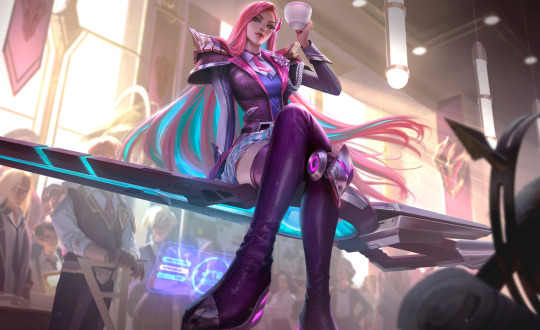
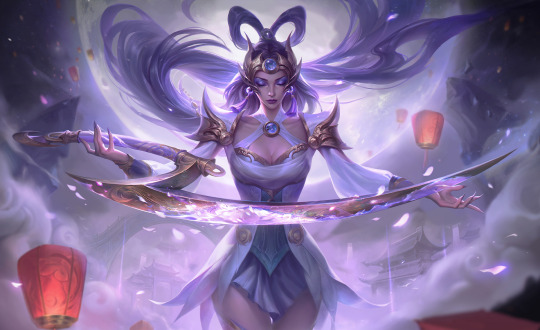



Chroma Splash Arts from LoL CN:
Battle Academia Caitlyn - Rose Quartz Chroma
Lunar Goddess Diana - Pearl Chroma
PROJECT: Pyke - Rose Quartz Chroma
PROJECT: Ashe - Mythic Chroma
Dawnbringer Riven - Mythic Chroma
#caitlyn#battle academia caitlyn#diana#lunar goddess diana#pyke#project pyke#ashe#project ashe#riven#dawnbringer riven#league of legends#league of legends skins#league of legends splash art#splash art#skins#mythic chroma#chroma skins
237 notes
·
View notes
Text
Asteroids Related to the Night
For those in love with the Moon and those who find comfort in the dark of the night. 🌙

1298, 3908, 658, 69, 714, 8962, 713, 105, 78, 580
100, 3271
Nocturna 1298
Meaning nightly
Think of the word nocturnal, meaning active at night
I have Nocturna conjunct NN and Chiron. I am for sure nocturnal. I focus better and am more creative at night. I don't think I slept early, even as a child.
Nyx 3908
Named after Nyx, the Greek goddess of the night
Born from Chaos, Nyx gave birth to many gods and goddesses related to daytime, nighttime, light, and darkness.
Asteria 658
Named after Asteria, the Titaness
Her name means of the stars, starry one
Known for being one of Zeus' conquests, she became a bird and then an island. As an island, she saves her sister Leto after Leto is impregnated by Zeus and cannot find a safe haven due to Hera's wrath
Hesperia 69
Named after the Hesperides in Greek mythology
Hesperides are the nymphs of the evening and the golden light of sunsets
They tend the garden and sing

Ulula 714
Named after the genus of owls
Owls are nocturnal birds, hunters, and symbols of wisdom in Western culture.
In African and Native American cultures, owls are symbols of death.
In Asian cultures, owls are symbols of good luck.
Noctua 8962
Named after a species of owl called Athene noctua or Little Owl (owl of Athena, owl of Minerva)
Commemorates Athena, the Greek goddess of wisdom, war, and handicraft
Luscinia 713
Named after the genus of nightingales
Known for their singing and frequently used in literature and other works of art
Sing both day and night; songstresses of the night.
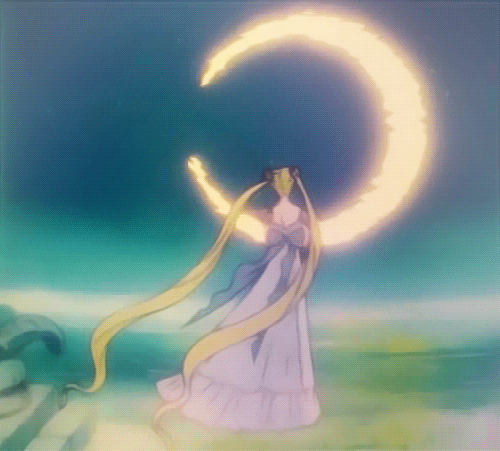
Artemis 105, Diana 78
Named after Artemis, the Greek goddess of the Moon, the hunt, animals, wilderness, and children, or Diana, her Roman counterpart
Her twin is Apollo 1862, who is associated with the Sun
Artemis is also associated with the menstrual cycle and childbirth
I have Artemis conjunct my Moon. Still trying to figure out if this has been expressed in an obvious way in my life yet...caring for animals, children...
Selene 580
Named after Selene, the Greek personification of the Moon
Means light, brightness, gleam
Drives a chariot across the skies to bring the night
Her brother is Helios, the Sun god, who drives a chariot across the sky to bring the day
I have Diana (above) and Selene conjunct with each other and my Neptune and sextile Saturn. Saturn sextile Neptune could refer to materialization. My ideas may be best developed at night (?) under the moon (?)
Hekate 100
Named after Hecate, the Greek goddess of crossroads, entryways, magic, witchcraft, the night, and the Moon
She is depicted with three bodies; all-seeing, transitional, liminal
A triple deity associated with the moon (Selene, Luna), hunting (Artemis, Diana), and herself as the underworld
Associated with dogs as well (thinking dogs and wolves howling at the moon)
Ul 3271
Named after a Melanesian lunar deity

#littledigest#astrology#natal chart#birth chart#asteroids#night asteroids#goddess asteroids#moon#moon astrology#nocturna#nyx#asteria#hesperia#ulula#owls#noctua#little owl#luscinia#nightingale#artemis#diana#selene#luna#hekate#hecate#ul#lunar deity
248 notes
·
View notes
Text
Diary of Reconnecting with Venus - Day 5
Today I very much needed the downtime of reflection with Venus. I unfortunately didn't have time for a candle- but I used moon water on my wrists to still involve elemental presence.
Today I:
- used moon water
- did my daily tarot reading, which has really become a source of using intuition to get advice from her!
- cared for my flowers from my girlfriend mindfully
My offering was quite large so I'm going to let it keep evaporating before washing it and redoing it. Maybe Fridays I can get into the habit of leaving a weekly offering.
As I reflect more I think I find ways in which I'd like to reincorporate Diana into my practice. I feel especially drawn to her lunar aspects currently, which as someone who works heavily with Venus' marine component I found the two goddesses always find their way together in my practice. I will definitely keep exploring this!
#venus devotee#paganblr#aphrodite altar#aphrodite devotee#venusian magic#aphrodite deity#aphrodite worship#diana goddess#artemis#hellenic pagan#roman paganism#goddess#pagan witch#paganism#pagan#pagans of tumblr
6 notes
·
View notes
Text

Artemis
Third painting of a series of four with a Greek mythology theme
As a goddess of the hunt and wilderness, it is logical that Artemis' sacred attributes included both arrows and deers. Although it's impossible to assign a specific species to the deers appearing in Artemis' representation, they are usually smaller in size than red deers, so I chose the fallow deer, which are originally native to southeastern Europe and Anatolia.
Although the Greek Artemis wasn't really considered a lunar deity, there was still some reference of her association with the moon and her Roman counterpart Diana was a fully-fledged lunar diety
#art#traditional art#animals#deer#fallow deer#diana#artemis#roman mythology#greek mythology#indian ink#video
12 notes
·
View notes
Text
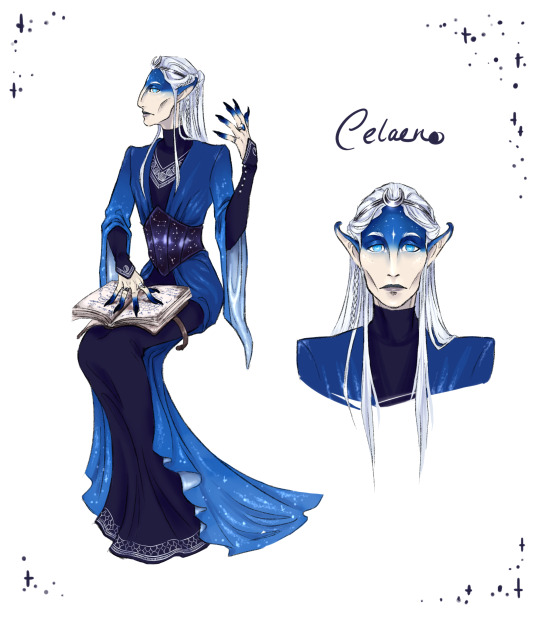
Continuing my self-imposed character challenge!
Celaeno - any pronouns
A lunar elf who has lived through enough centuries to find humanity ephemeral and rather tedious. They seldom speak, and even then in phrases that are cryptic, layered with meaning that may become clear only with time. On clear nights, they sit beneath the stars and whisper. One has to wonder what they say to her?
Her crown is based off of the crescent moon circlets and headpieces that the goddess Diana has often been shown with! (Though it seems to have originally been popularized through depictions of the courtier Diane de Poitiers)
If you know which particular piece of media I got the name from you get a cookie
11 notes
·
View notes
Text
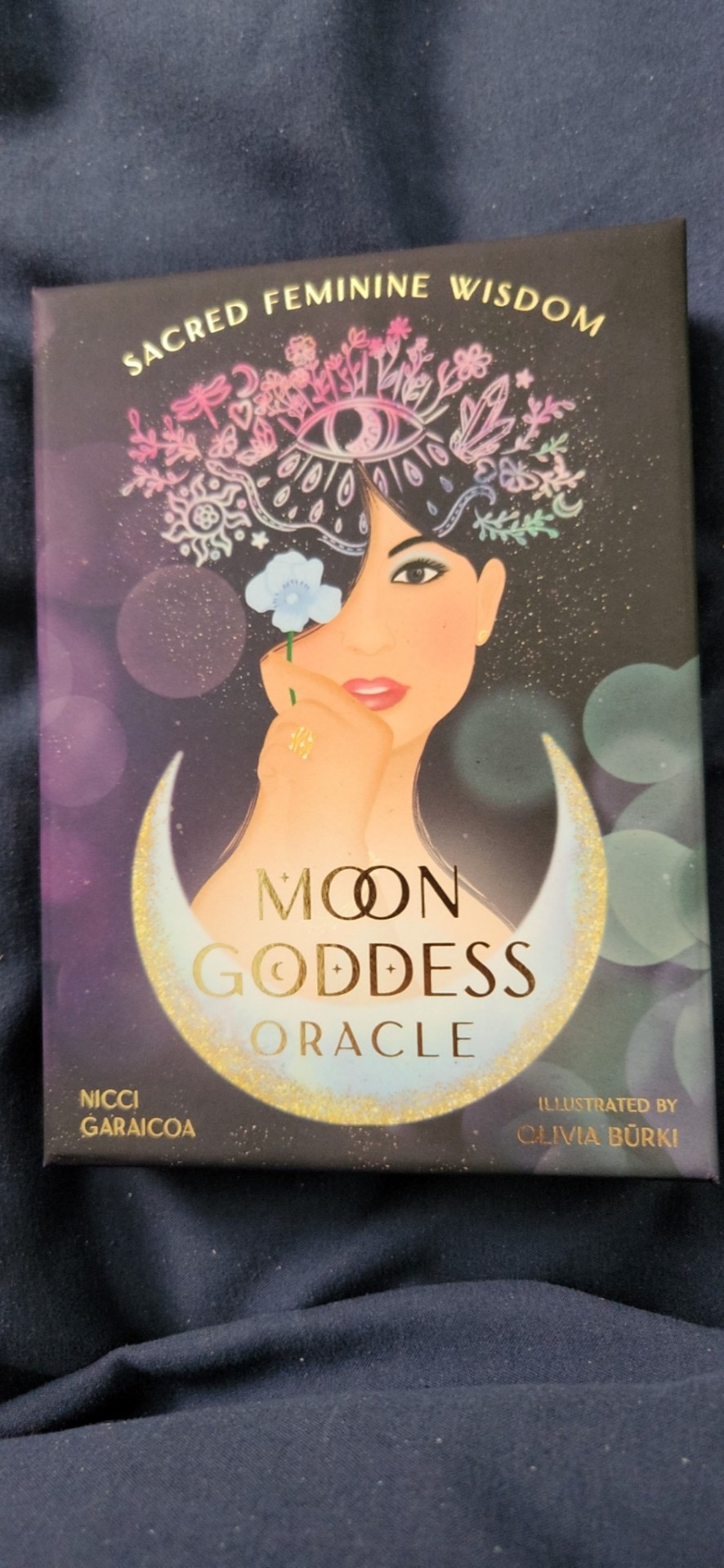
I wasn't going to buy this. I told myself, "you are just going to be mad/disappointed when most of the goddesses are mislabeled as moon goddesses" but I love Olivia Bürki's art (she also did the Witching Hour Oracle) so here we are.
So instead of talking about the deck as a whole I thought we'd go through the goddess cards in the deck and see how many are actually moon goddesses.
Here is your warning in advance for whitewashing and sexualization of BIPOC.
I'll put an asterisk next to goddesses from living cultures. Note: I prefer the term "living" to "closed" because "closed culture" has been misused by non-academics, but it amounts to the same thing: do not touch without permission.
If you know more about any of these deities let me know. I'm working with wikipedia and passing familiarity with some of these pantheons.

Aine
Moon goddess? I'm confident in saying no. Aine is, to my knowledge, explicitly associated with the summer solstice. Wiki does mention a tradition in Limerick where people would bring the sick to a lake during the full moon but that's all I can see that points to lunar symbolism.

Anahita*
Moon goddess? I had to do a bit of digging and my conclusion is no, although wikipedia mentions that Anahita has been syncretized with numerous goddesses. She appears to be primarily associated with water and lotus flowers. The Persian moon deity, Mah, is a god (he's not a very prominent deity apparently).
I do like the art though.

Archangel Haniel (also called Anael, Hananel, Hanael, Aniel) *seems to be exclusive to Jewish tradition, not shared by Christians or Muslims
Moon goddess? Well, not a goddess, an angel. It's also important to note that lists of archangels and their associations get shuffled around. Wikipedia associates her with Venus. Back when I was into a lot of New Age stuff, Gabriel was the archangel most often associated with the moon, but it appears that some New Agers are really into the Haniel = moon thing. I'm leaning towards no but am tempted to give this one half a point.
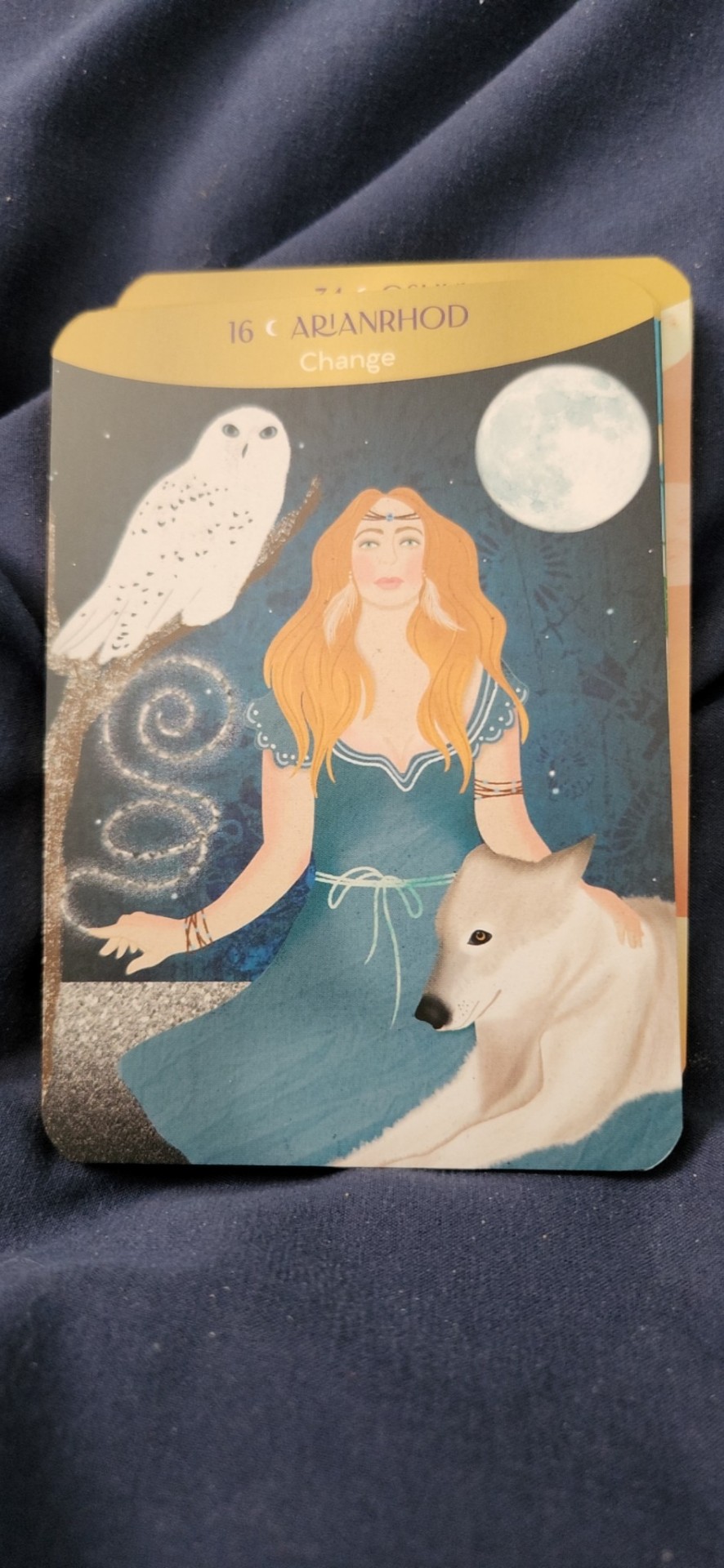
Arianrhod
Moon goddess? Maybe. A lot of folks look at her name ("silver wheel") and assume she's a moon goddess based on that. Other common associations are with the stars and the sky.
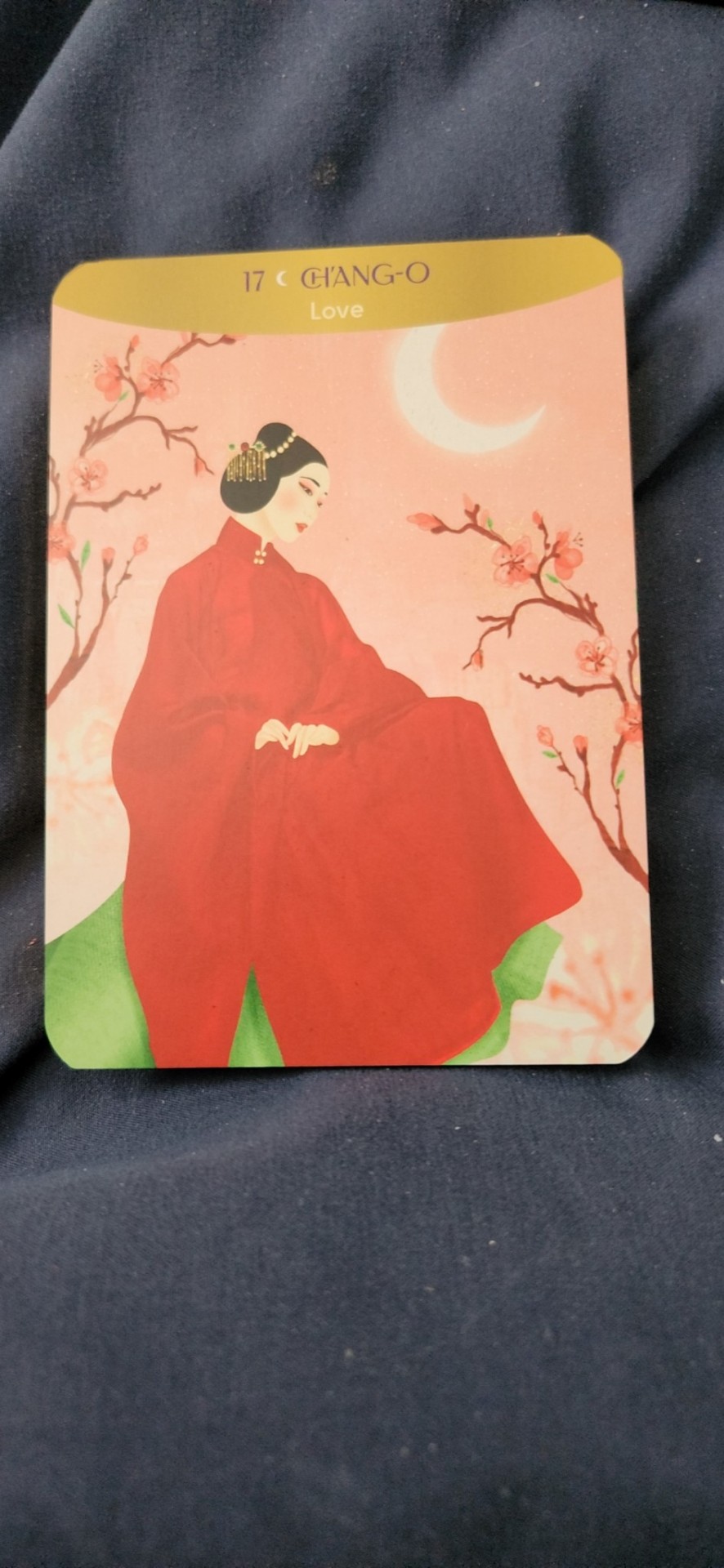
Chang-O (or Chang Er)*
Moon goddess? Yes.

Coyolxauhqui*
Moon goddess? Yes, or at least her severed limbs made the moon.
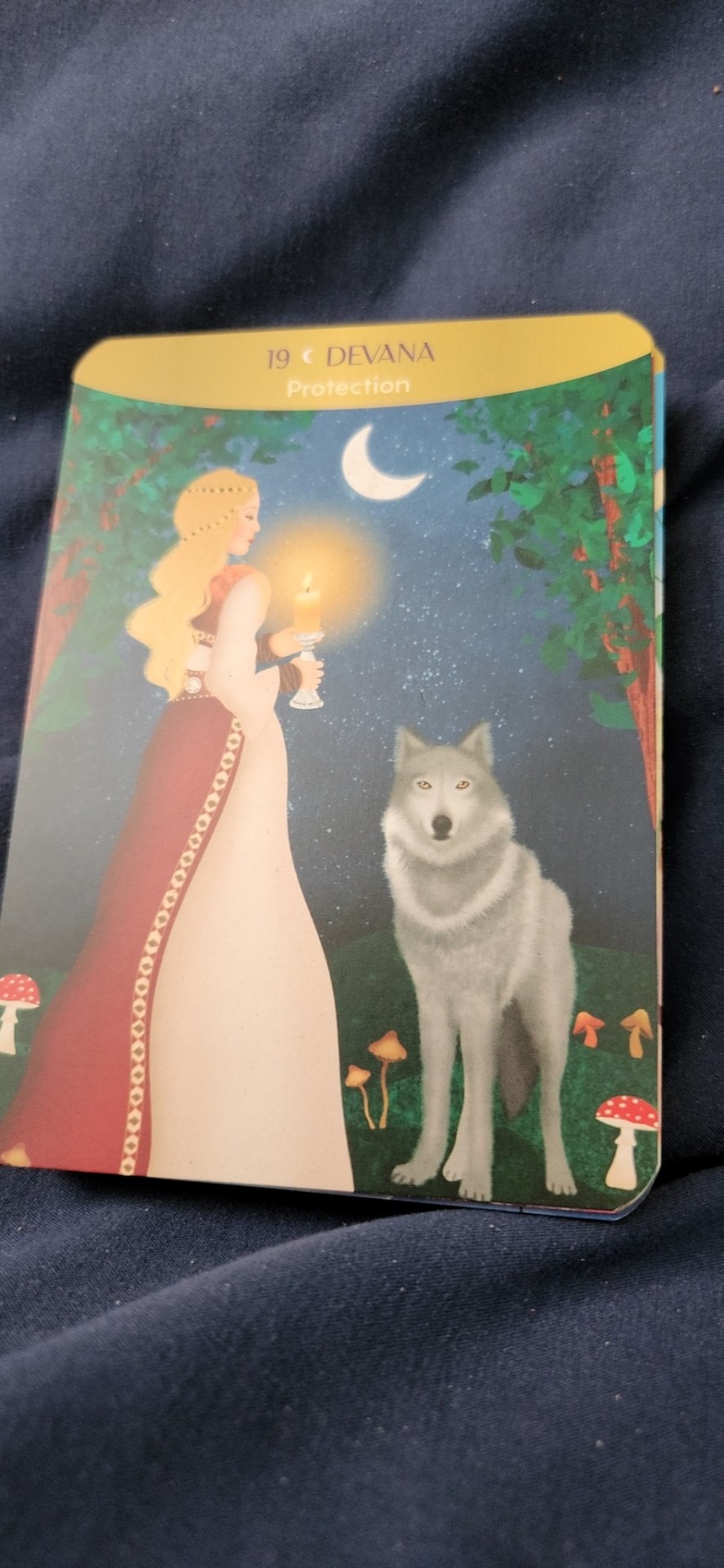
Devana
Moon goddess? Maybe. She seems to be associated with forests and hunting and equated with Artemis and Diana (both eventually came to be associated with the moon and are kind of stuck with it now). But different Slavic cultures had their own moon deities. Also I've heard some deities are just wholesale fabrications.

Dewi Ratih*
Moon goddess? Yes, associated with lunar eclipses. (Also I love her outfit.)
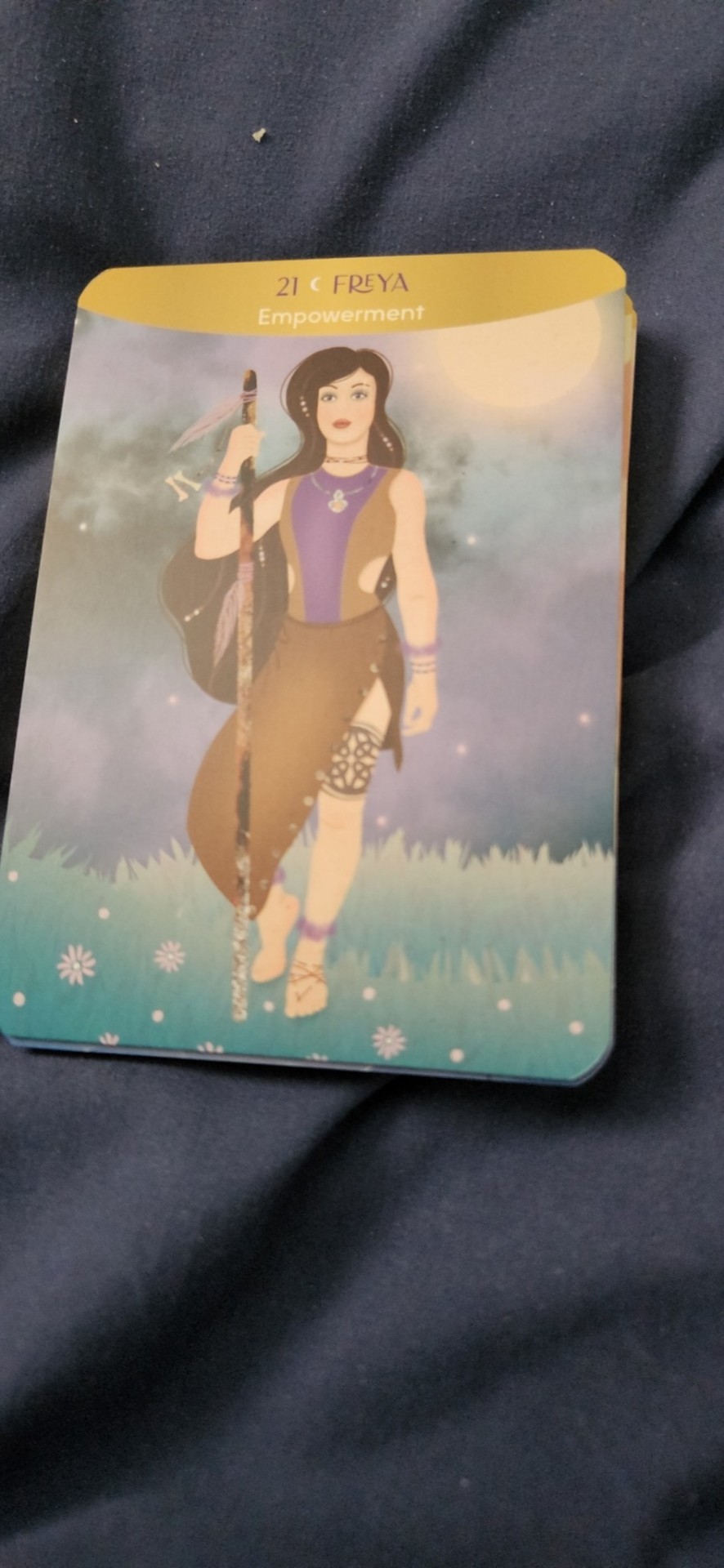
Freya
Moon goddess? No, stop it.
Continued in my next post
3 notes
·
View notes
Text
Azura’s real world inspirations can be split between hypothetical Dawn and Dusk Aspects. Note that all of these can be purely coincidental and this is all speculation on my part.
The “Dawn” aspect is what i’d say became of the basis for her original appearance in Daggerfall. At that time, she was simply a goddess of vanity and egotism, though I’d argue she was also associated with at least dawn at that time through her “crimson gate” and summoning date being 21st of First Seed(more on that later). To me, there’s an obvious inspiration of Aphrodite immediately apparent, but I think it goes even deeper that it might appear on the surface. Perhaps the bulk of these inspirations didn’t come until later, but I think Azura finds inspiration from two of Aphrodite’s theorized origins as well.
The first is the one most obviously tied to Azura. Inanna is the Sumerian goddess of Love and War. She is heavily associated with Venus aka the Morning Star and is also known as the Queen of Heaven. Some important symbols of hers are the eight-pointed star, a rosette, and a lion. Inanna’s cult would have her become known as Ishtar, Ashtart, Astarte, and eventually Aphrodite as it moved from place to place. Even her associated planet would take the name of her Roman equivalent Venus. Her sphere of influence would also change though, as she lost pretty much all ties to War instead becoming strictly tied to Love and Beauty. Although, she would later regain her ties to the heavens as Aphrodite Ourania.
The second origin is one that’s more theoretical than the first with less evidence overall. It’s that Aphrodite at some time split from Eos, the Greek dawn goddess with both being part of the long lineage of a proto-indo-European dawn goddess called Hewsos. This is notable because other deities within this lineage also lay claim to spring with one recognizable name being Eostre/Ostara. This lines up with Azura’s summoning day being the tamrielic equivalent to the first day of spring: the 21st of First Seed aka March.
Azura combines these two origins to create an Aphrodite that adds influence that she lost over time and mixes in spheres her relative goddesses would later gain.
Her later associations with magic, prophecy, and fate would come from a third inspiration of Hecate. Hecate’s influence on Azura are what I’d call her “Dusk” aspect. Boundaries and transition, Magic and the Moon(s). None of these were in Daggerfall (aside from the aforementioned “Crimson Gate”) but would become central to Azura in later games. I’d say this Dusk aspect is best shown in Khajiit lore and is solidly Azurah in contrast to Azura as explored before.
Like Azurah, Hecate was said to hold domain over liminality and thresholds (The rim of all holes). Hecate was also pictured with keys that could unlock the boundaries between worlds which Azurah has a direct nod to in Khajiit mythos. Azurah has also taken the triple body form which can be directly seen in ESO in the Ashen Scar door. Another interesting aspect is that, as well as having three bodies, Hecate was also part of a triple-deity group of the moon with Luna/Selene and Diana/Artemis. This is notable because Azurah herself holds power over the three moons of Nirn.
Another interesting aspect is that Hecate is associated with the underworld and protecting mortals from harmful spirits. Azurah accomplishes both of these. She maintains the lunar lattice to protect Nirn from adversarial spirits and sends her champions into the Void to redeem the Dro’mathra. She also acts as an arbiter of dead Khajiit in this aspect.
I don’t really have a closing or final thesis for this I just thought it was interesting lol. If there’s three Azura’s like there’s three Hecates, maybe the third Azura is just the mixture of both aspects in balance? Idk.
8 notes
·
View notes
Text

Selene and Endymion, by Ubaldo Gandolfi
The Roman lunar deity, Luna
In ancient Roman religion and myth, Luna is the divine embodiment of the Moon. She is often presented as the female complement of the Sun (Sol) conceived of as a god. Luna is also sometimes represented as an aspect of the Roman triple goddess, along with Proserpina and Hecate. Luna is not always a distinct goddess, but sometimes rather an epithet that specializes a goddess, since both Diana and Juno are identified as moon goddesses.
In Roman art, Luna attributes are the crescent moon is often depicted driving a two-yoke chariot called biga. In Roman art, the charioteer Luna is regularly paired with the Sun driving a four-horse chariot.
Varro, an ancient Roman scholar and writer, lists Luna among twelve deities who are vital to agriculture, as does Vergil in a different list of twelve, in which he refers to Luna and Sol as clarissima mundi lumina, the world's clearest sources of light. Varro also lists Luna among twenty principal gods of Rome. In this list, Luna is distinguished from both Diana and Juno, who also appear on it.
The Romans dated the cultivation of Luna as a goddess at Rome to the semi-legendary days of the kings. Titus Tatius was supposed to have imported the cult of Luna to Rome from the Sabines, but Servius Tullius was credited with the creation of her temple on the Aventine Hill, just below a temple of Diana. The anniversary of the temple founding was celebrated annually on March 31. The Aventine temple may have been destroyed by the Great Fire of Rome during the reign of Nero.
Luna's Greek counterpart was Selene. In Roman art and literature, myths of Selene are adapted under the name of Luna.
11 notes
·
View notes